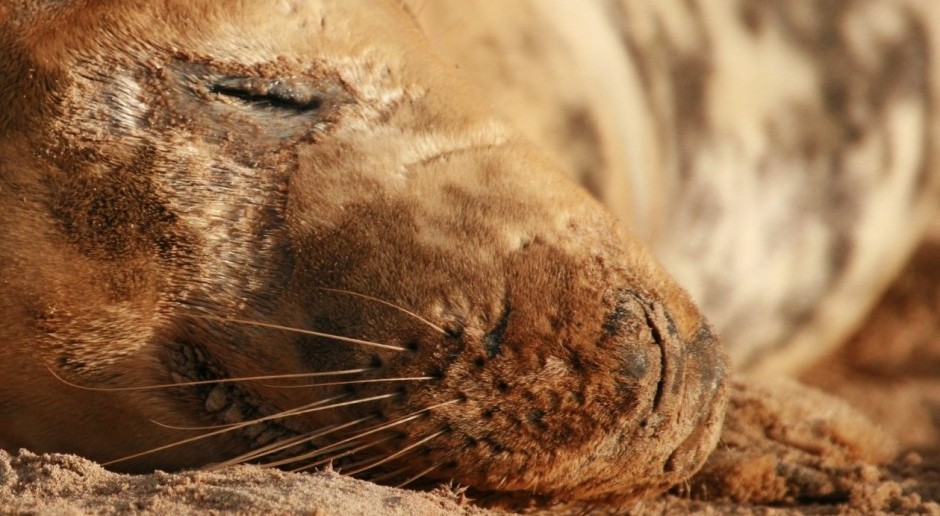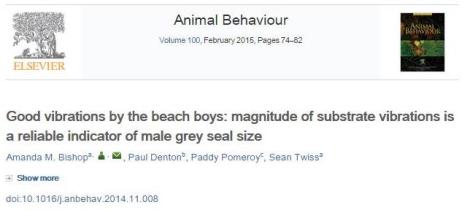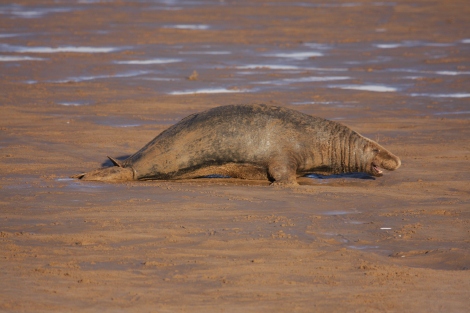We are happy to announce our recent publication of “Good vibrations by the beach boys:
magnitude of substrate vibrations is a reliable indicator of male grey seal size” in the journal of Animal Behaviour.
As mentioned in the post ‘Happy Slapsgiving’; in the 2013 fieldseason we deployed a seismometer to measure how strong the vibrations were caused by the male body slapping behaviour. This behaviour has also recently gotten some attention on the BBC Winterwatch program, as males were observed performing it at night at Blakney Point, England!
In this paper, we show that there is a positive relationship between the magnitude of the vibrations a male generated and his size, and that the information appeared to be reliable across the packed sand on the beach.
Now it is important not to jump to the conclusion that males can ‘tell the difference’ between a small male slapping and a big male slapping! We have shown the first step in understanding this behaviour—that the information is present in the vibrations; what we now need to determine, is if other males are responding to that information. This can be done with playback experiments such as the ones used to investigate the calls of male elephant seals.
Here is the abstract and a link to the paper!
———————————————
Communication via substrate vibrations can convey information on conspecific presence, individual quality, group cohesion and/or allow for predator avoidance. Although studies have identified that various species use this modality, few studies on mammalian taxa have investigated whether the information contained in substrate vibrations is a reliable indicator of resource-holding potential (RHP). The grey seal, Halichoerus grypus, breeding colony at Donna Nook, U.K., is part of a limited geographical region where the Body Slap (BS) behaviour is performed during male–male conflicts. This behaviour is thought to have a mechanical component. We examined whether the magnitude of the BS substrate vibrations contained reliable information on male mass and size as measures of RHP, and whether reliability varied across environmental conditions. To test this, we deployed seismometers during the breeding season that recorded continuous seismic data over a frequency bandwidth of 0.03–500 Hz. Locations and times of BS events performed by individual males were recorded, matched with the seismic data, and a distance-corrected magnitude was calculated for each event. Our results demonstrate the BS generates a stereotyped seismic signature measurable up to 126.3 m away. We found a positive correlation between the maximum and mean magnitudes of the substrate-borne vibrations and a male’s length. Dampness of the sand substrate had no effect on magnitude. Results of this study confirm that the maximum magnitude substrate vibrations generated by the BS behaviour is an indicator of male size and that the substrate-borne vibrations are reliable across varying environmental conditions.
The article can be found at:http://www.sciencedirect.com/science/article/pii/S0003347214004199
If you have any questions feel free to get in touch! (a.m.bishop@durham.ac.uk or s.d.twiss@durham.ac.uk )



Great job! And such a nice blog!
I’m going to write about this aspect of grey seal behaviour on our Czech web about animals http://zoomagazin.cz. May I have your permission to use the image of the gray seal’s body slap, please? I’ll provide link to the source of course.
Keep up the good work!
Hi Elischka
thanks – and thats fine – happy for you to use the stills photos/images of the body slap, so long as you credit them to Amy Bishop
Cheers
Sean
Thank you so much, it’s done. 🙂
Pingback: Where are they now: North to the Future | Studying Seals·